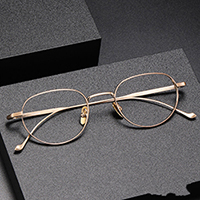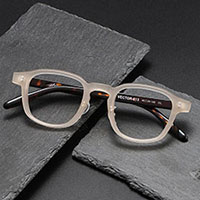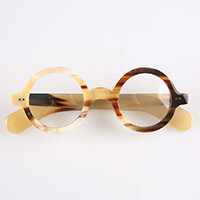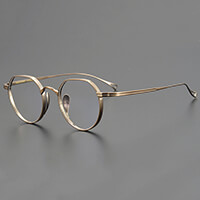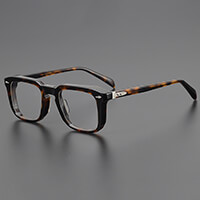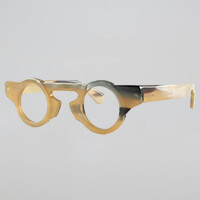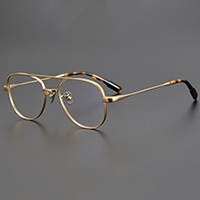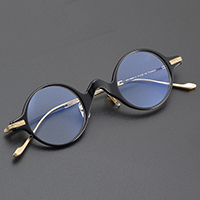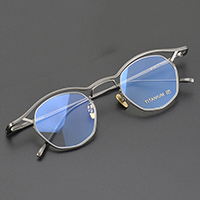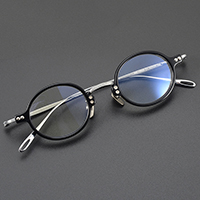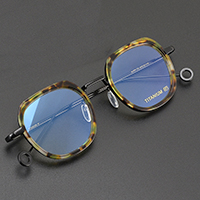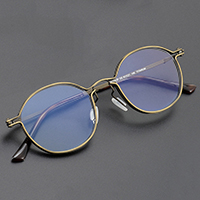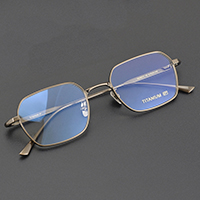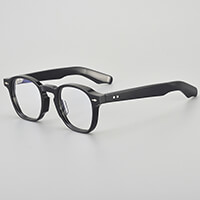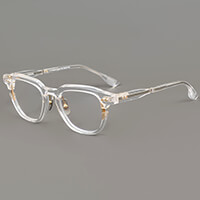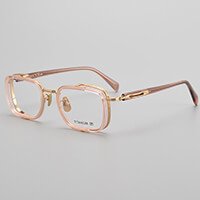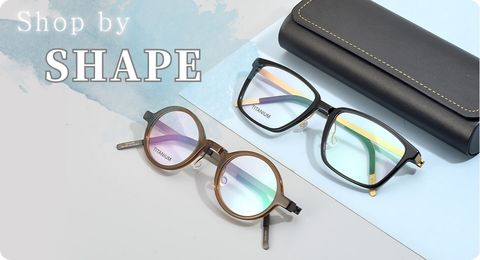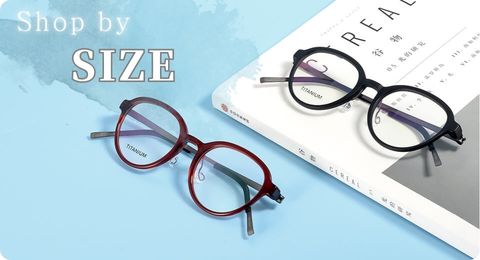Pupillary distance is crucial for ensuring optimal vision with eyeglasses. Many people are unsure how to measure pupillary distance accurately.
In case your PD isn't available from your optician, you're not alone in facing this challenge.
With various methods at your disposal, achieving a precise measurement at home is possible using simple tools and techniques.
What Is Pupillary Distance?
Pupillary distance, or PD for short, is the measurement of the space between the centers of your pupils. Typically expressed in millimeters, this measurement plays a pivotal role.
This distance ensures that the optical centers of eyeglass lenses align with your eyes correctly.
Most commonly, optometrists working in ophthalmology and optometry use a device called a pupillometer to obtain this measurement.
An accurate PD allows for the glasses to offer the best visual corrections and utmost comfort, making it essential for personalized lenses.
Whether you're buying new frames in-store or online, ensuring that your lenses align with your pupils is key to experiencing optimal vision without strain.
Luckily, tools and apps are now available to find your own pupillary distance conveniently at home.
Why Pupillary Distance Is Important
The importance of pupillary distance (PD) in eyewear cannot be overstated.
Simply put, an accurate pupillary distance is a fundamental factor in crafting lenses that truly enhance vision. When PD is measured precisely, it ensures that each lens's optical center complements the individual's unique eye positioning. Misalignment could lead to discomfort and visual strains, affecting the overall experience with your eyewear.
For optimal vision, every pair of glasses should be tailored as per one's specific PD. Consider this measurement as the alignment key that unlocks maximum lens efficacy, providing crisp and clear imagery, essential for both daily tasks and specialized activities.
Moreover, understanding the significance of PD can help consumers make informed decisions when selecting eyewear, especially when ordering online. As technology continues to advance, our ability to ensure a perfect fit between lenses and eyes improves, reducing common problems such as dizziness and blurred vision due to improperly aligned glasses.
Single PD vs. Dual PD
Single PD is the standard measurement that accounts for the distance between the centers of both eyes' pupils.
Often referred to as binocular PD, this singular measurement is commonly used in crafting most eyeglasses. The simplicity of having one figure to consider makes it convenient, especially for standard eyewear needs and when ordering glasses online.
On the other hand, Dual PD offers a more detailed approach by measuring each pupil individually to the nose bridge, giving two distinct numbers. This method, also known as monocular PD, is particularly beneficial for those needing specialized prescriptions, like progressive lenses that require precise customization. This specificity, along with proper calibration, ensures a personalized fit that enhances visual comfort.
Choosing between single or dual PD depends largely on one's eyewear requirements. For single vision lenses, a single PD often suffices, but dual PD is ideal for progressive lenses where accuracy can significantly impact overall satisfaction. Understanding these options can empower individuals to select eyewear that best fits their needs.
Ultimately, both single and dual PD measurements serve the vital purpose of aligning lenses for peak performance and comfort.
What Is a "Normal" Pupillary Distance?
An average pupillary distance for adults typically ranges from 60 to 64 millimeters, and this small variation in numbers is perfectly normal, as life itself is full of delightful diversity.
Interestingly, many people will naturally fall within this broad range.
It's essential to remember, though, that everyone's pupillary distance is as unique as their fingerprints. Whether you're above or below the average, rest assured that what matters most is obtaining an accurate measurement tailored to your visual needs.
Embracing individual variations in pupillary distance can be part of the fun when it comes to selecting the perfect eyewear. With the precision available in modern lens crafting, no one is restricted by a so-called "normal" PD, allowing for personalization and optimum visual experience. So step confidently into the world of bespoke eyewear, knowing that accurate PD measurements will illuminate the way to enhanced clarity.
Measure Pupillary Distance Using Opthy
Start Using Opthy
Scan the QR code and download the app. App available on iPhone X and above.
Opthy presents a remarkable blend of convenience and precision in measuring the pupillary distance easily from home.
Opthy harnesses advanced technology, powered by EssilorLuxottica, to ensure a user-friendly experience while obtaining accurate PD measurements. It removes the guesswork, offering a seamless solution for anyone needing these essential numbers for their eyewear needs.
With just a few simple steps, individuals can gain insightful measurements of their pupillary distance using Opthy's dynamic interface. The app guides users effortlessly through each phase, providing immediate feedback and confidence in the results obtained.
This revolutionary app is ideal for anyone who wants hassle-free precision without leaving the comfort of their home. No longer do people need to worry about the intricacies of rulers or mirror setups. Take a few moments, follow the user prompts, and let Opthy do the rest for you.
Streamline your eyewear purchasing process by letting Opthy handle the PD details with accuracy and ease.
How to Measure Pupillary Distance at Home
Measuring pupillary distance at home can be a straightforward process with a few simple tools and techniques, even determining near PD for reading glasses can be easily accomplished.
Use a millimeter ruler and a mirror or recruit a friend's assistance to achieve accurate readings, making adjustments as necessary to capture a precise measurement multiple times.
Remember, persistence and patience are key companions to mastering this important eyewear feature.
Option 1: Ruler and a Mirror
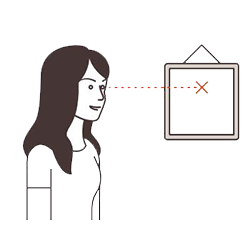
1. Stand 8 inches
from the mirror
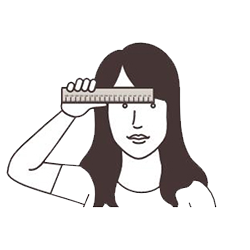
2. Align ruler with brow
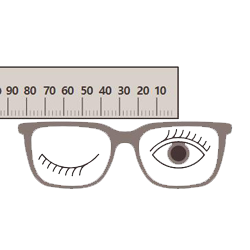
3. Close one eye and
align 0 mm with open eye pupil
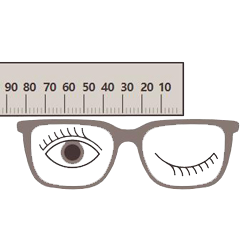
4. Switch eyes and
note the millimeter reading
To measure pupillary distance, you only need a mirror and a millimeter ruler.
Accurate PD measurements contribute significantly to better vision—ensure your glasses fit perfectly with these precise measurements.
Stand approximately 8 inches from the mirror, gazing directly at your reflection, and place the ruler firmly against your brow line. Close one eye to align the 0 mm mark with the center of the open eye's pupil.
Switch eyes—close the opposite eye and note the millimeter line aligned with the open eye's pupil. This measured number is your pupillary distance, and repeating this method ensures accuracy.
Option 2: Ruler and a Friend
Measuring PD is easier with a friend.
Engaging a friend's assistance can ease the measurement process. Ask your helpful partner to stand in front of you as you maintain a steady focus on an object about 10-20 feet away. This distance ensures your eyes are relaxed and allows your pupils to settle into a natural position.
Place the ruler on your friend’s brow line.
The key is consistency and focus—keep your eyes on that distant target. Your friend will then align the 0 mm line of the ruler with the center of one of your pupils while you remain still.
Once aligned, your friend should note the millimeter line that matches up with the center of your other pupil. Jot down this measurement, as it is your pupillary distance. Testing this method multiple times can ensure that your measurements are both accurate and reliable, providing you with optimal vision alignment for prescription glasses, such as reading glasses.
Option 3: Felt-Tip Marker, Glasses, and a Ruler

1. Focus on an object
20 feet away

2. Mark a dot
on the right lens

3. Mark a dot
on the left lens
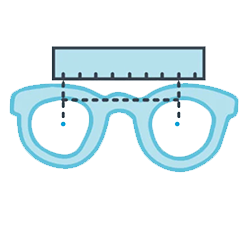
4. Measure the distance
between the dots
Measuring pupillary distance can also be accomplished with a felt-tip marker alongside your glasses and a ruler.
For this method, pick a comfortable location where you can focus on an object at least 20 feet away. Begin by marking a small dot on the right lens of your glasses while focusing on that object to ensure accuracy. Following that, make another dot on the left lens. It’s important that when both eyes are open, these dots overlap to form a single dot in your vision.
Now, carefully take off your glasses and use a ruler to measure the distance between the centers of these dots. Make sure the ruler starts at 0 mm on one dot, and read the millimeter line that touches the other dot. This measured distance is your pupillary distance.
Using this simple technique can offer a reliable measurement of your pupillary distance. This method combines creativity and precision, utilizing common items you likely already have at home. Just remember to wipe off the marker from your lenses afterward, ensuring your glasses remain spotless and ready to use for perfect vision on your next adventure.














